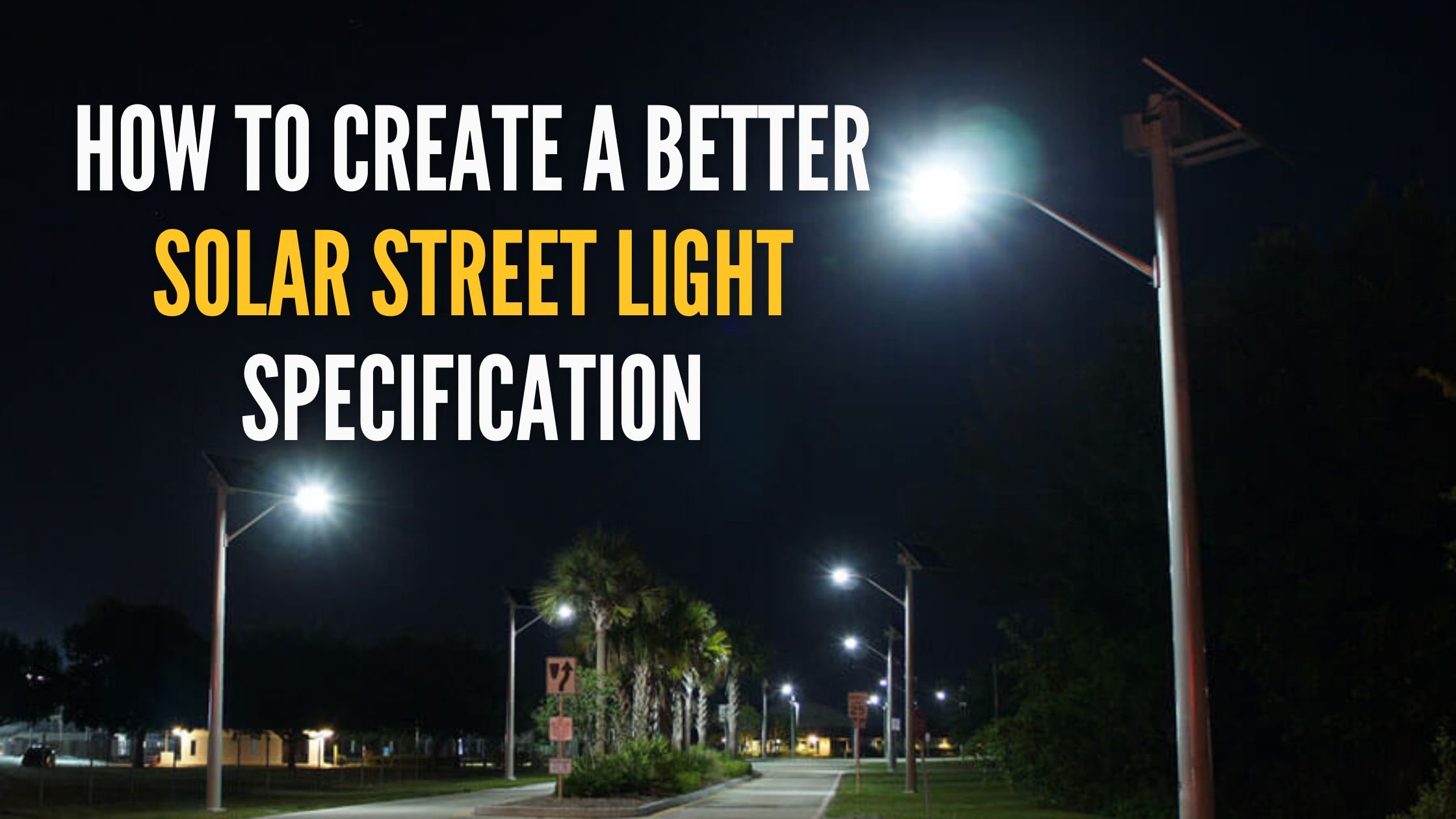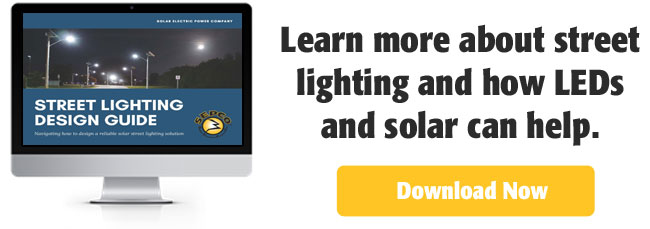
Contents
Specification packages are typically completed by a company working with an architect or engineer to provide data about their product for a bid. These specifications are generally completed to ensure that a customer's needs are met and that everything will work well together. Street lighting is one of those areas where specifications need to be worked on with care to ensure that everything works well together and provides added benefits and safety. Let's look at what it takes to create a better solar street light specification.
What is a bad solar street light specification?
Before we get started looking at creating a better solar street light specification, let's take a quick look at an inadequate specification I recently saw on a recently released bid. There is much to be learned when comparing the two.
Solar Lighting Specification
Purchase and delivery of 10 solar street light systems with the following salient characteristics:
- Solar panel
- Sealed lead acid battery
- Solid state system controller that regulates batteries and has a low voltage disconnect
- Light fixture with LED lamp that produces good street lighting
- Light fixture mounting bracket
- The entire solar lighting system mounted on a pole
The primary reason this specification is so bad is that it is too vague. This type of bid release leaves the specification open to a host of different interpretations. The lack of specifics will lead to purchasing cheap solar street lighting systems that offer poor performance, reliability, and ROI. This, quite frankly, gives the entire industry a bad rap.
Creating a Better Solar Street Light Specification
The only way to avoid the above situation is to create a detailed specification that establishes precise solar street lighting system design and performance parameters, including:
Solar Power System
The solar power system should list the number of solar modules used in an array. This can be one or two in most cases, but there are sometimes when more is used. The solar section should also list if single / monocrystal or multiple / polycrystal solar panels are used.
The solar section should also list the total solar array wattage. This is many times confused for the fixture wattage.
Finally, the solar section should list how the solar is to mount to a pole, wall, or roof. It should also detail how the solar is mounted to the pole, either using a tenon top or a side of pole mount option and what type of bracket is expected.
Solar Light Fixture
The solar light fixture section should list the type of fixture and include any model or part numbers to distinguish between various options. Many fixtures have different options and salient characteristics, including:
- Lumen per Watt provided by the fixture
- Type of lamping
- Light distribution pattern
- Light level requirements such as foot candles
- B/U/G rating and Dark Sky requirements
Also included in this section is what type of mounting the fixture should be used and at what height the fixture should mount. This will help with the next section.
Light Level Requirements
The light level requirements state precisely how much illumination that is on the project. The light level requirements should include information such as:
- Specify area to be illuminated (ex. 2 lane street, each lane 12' wide with no median, light pole set back 5' from the edge of the road)
- Light level requirements—the more detail, the better (ex. lighting on the street must be .3 foot candle average with lighting uniformity rations under 10:1)
- Note: Never specify light levels according to 'equivalency' (i.e., LED fixture equivalent to 150 Watt metal halide) –as this spec type lends itself to many different interpretations! Such is not the case with foot candle specification, as a foot candle is a quantifiable measurement of light
One of the worst things we see in specifications is only getting one piece of the puzzle when looking at the lighting portion of the specification.
System Controls
The system controller is the brain of the whole operation. The controller allows the batteries to charge correctly and not overcharge during the day. Depending on its programming, the charger also tells the lights when to turn on and off.
A detailed description of nightly system operation is critically important to ensure the solar lighting system meets needs since, with adaptive lighting being installed on most systems, dusk to dawn is not always enough information.
Understanding key requirements are essential when creating a solar street light specification, specifically what is the operation of the lights. For example, must the lights be on at full output from dusk to dawn, maintaining the light output all night? Or are the lights allowed to reduce the intensity or even shut off after a set timeframe.
If the lights are allowed to reduce or shut off, do you need them to be at full output again before dawn? If so, how long before dawn is this preferred. Remember that all light controls are set for the worst-case scenario, so dusk to dawn may be 14 hours in your location in the winter, but in the summer, you only run them 8 hours. So split time of 8 hours would look like this: on for 7 hours after dusk, shut off, on again 1 hour before dawn.
Battery Assembly
The battery is what holds power generated by the solar power assembly during the day for the fixture to use at night. Different battery choices are used for different types of installation. For example, Lithium isn't proven well in climates that get too hot or too cold. GEL or lead acid batteries each have their own set of pros and cons.
Make sure to list the salient features of the battery requirements, such as the type of battery, the storage size of battery assembly in Amps, the autonomy of the battery backup to ensure year-round performance, etc. Minimum backup for a GEL or lead acid system needs to be 5 days, whereas we are seeing Lithium able to carry a 3-day backup and still be very reliable.
The last section to provide for the battery information is the salient characteristics of the battery box and battery box mount, such as NEMA rating, construction materials, etc.
Solar Light Pole
The type of pole is critical to a system specification. The pole needs to be able to handle the weight and EPA of the solar power assembly with the wind conditions of the installation location. Other specifications include the material, such as aluminum, steel, concrete, or fiberglass. The type of pole, direct burial or anchor base, and whether you need a breakaway or auger base are good to have listed. Finally, what is the pole's finish requirement? Whether powder coated to match the rest of the system or everything is just raw aluminum and steel can completely change the price point and submittals.
With these design and performance parameters incorporated and woven into the specification, there is no question that the buyer will ultimately get high-quality solar power street lighting systems at the best possible price. It also means that the customer will receive the system that meets their specification and won't leave them in the dark.

